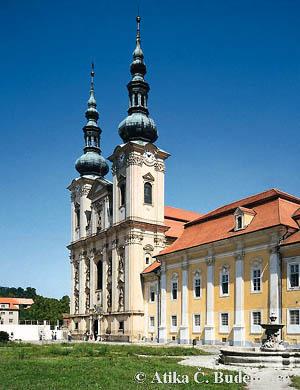Velehrad

The monastery founded earlier by Cistercian monks in 1205 in the charming valley of the little river Salaška with the financial help of Vladislav Jindřich, Margrave of Moravia. By the middle of 13th century there was already a triple-aisled Romanesque basilica with transept and five apses at the east end. The sanctuary was consecrated in 1228, and by the end of the century the monastic buildings had been completed. In the latter half of that century a single-aisled chapel called the Cyrilka was built within the monastery precincts. Badly damaged in 1423 by the Hussites, the buildings were not radically renovated until 1681-1769. Giovanni Pietro Tencalla was the architect responsible for the refashioning of the Romanesque basilica, Baltazar Fontana and Josef A. Winterhalder for the stucco of both church and monastery, while the sculpture was executed by Michal Mandík and Antonín Riga, and the paintings by Michael L. Willmann, Franz Eckstein, Jan J. Etgens and Ignaz Raab. Nearby, an extensive lapidarium has been erected to contain architectural and sculptural fragments mostly deriving from the late Romanesque stage of construction. Velehrad is a lively religious centre attracting thousands of pilgrims every year.



